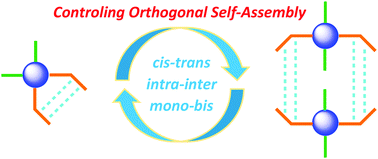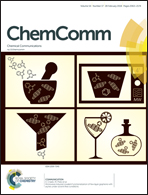Controlling orthogonal self-assembly through cis–trans isomerization of a non-covalent palladium complex dimer†
Abstract
The trans-configured square-planar complex of dichloropalladium and chiral monodentate phosphine ligands forms self-complementary dimers through 16 hydrogen bonded amides and π–π stacking in chlorinated solvents. The self-assembly is controlled by cis–trans isomerisation of the metal center, where the trans-configuration governs the dimer formation.



 Please wait while we load your content...
Please wait while we load your content...